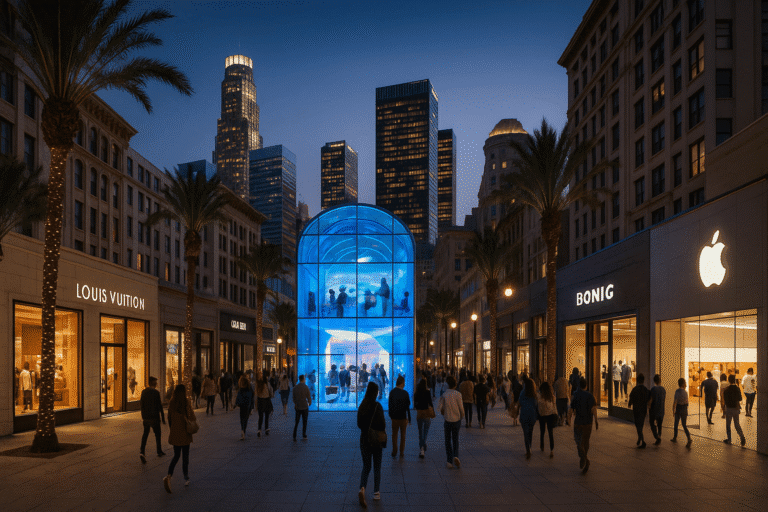A Dynamic Shift in Downtown LA’s Retail Scene
As of early 2024, Downtown Los Angeles (DTLA) is undergoing a significant transformation in its retail landscape. While the area has traditionally been overshadowed by more prominent shopping districts, recent developments indicate a resurgence in both luxury and experiential retail sectors. This evolution is reshaping DTLA into a vibrant hub for diverse shopping experiences.
Surge in Luxury Retail Activity
The luxury retail sector in DTLA is experiencing notable growth. For instance, in late 2023, South Coast Plaza, located in nearby Costa Mesa, announced the opening of over thirty new brands in early 2024, including high-end labels like Alaia, Amiri, and Giorgio Armani. This influx underscores the increasing appeal of Southern California as a prime destination for luxury retail expansion.
Simultaneously, global luxury brands are investing in flagship stores across Los Angeles. In July 2024, private investors acquired Wilshire Rodeo Plaza with plans to develop larger retail footprints to meet the evolving needs of luxury brands . Such investments highlight the strategic importance of Los Angeles in the global luxury retail market.
Emphasis on Experiential Retail
Beyond traditional retail, experiential shopping is gaining momentum in DTLA. Brands are increasingly focusing on creating immersive in-store experiences that engage customers on a deeper level. A report by Retail Technology Innovation Hub notes that retailers are shifting towards creating in-store experiences to forge stronger connections with consumers .
This trend is evident in the emergence of concept stores and pop-up experiences that blend retail with entertainment and community engagement. Such initiatives not only attract foot traffic but also foster brand loyalty and enhance customer satisfaction.
Leasing Trends and Market Dynamics
The retail leasing market in DTLA reflects these shifts. While vacancy rates in Greater Downtown Los Angeles rose to 7.8% in mid-2024, indicating a slight increase in available retail space , the demand for prime locations remains robust. Landlords are adapting by offering flexible lease terms and investing in property enhancements to attract high-quality tenants.
Moreover, the integration of technology and sustainability into retail spaces is becoming a priority. Retailers are incorporating digital interfaces, sustainable materials, and energy-efficient designs to meet the evolving expectations of environmentally conscious consumers.
Challenges and Opportunities for Smaller Retailers
While the retail boom presents opportunities, smaller retailers face challenges in securing prime locations due to increased competition and rising rents. However, the trend towards experiential retail offers avenues for differentiation. By focusing on unique customer experiences and community engagement, smaller businesses can carve out niches and build loyal customer bases.
Conclusion
The retail landscape in Downtown Los Angeles is undergoing a dynamic transformation, characterized by a surge in luxury retail activity and a shift towards experiential shopping. These developments are positioning DTLA as a key player in the global retail market. As the area continues to evolve, it offers a model for other urban centers seeking to revitalize their retail sectors through innovation and strategic investment.
